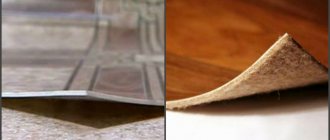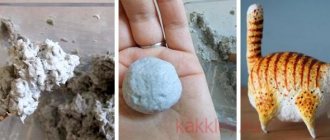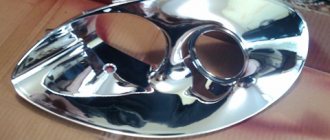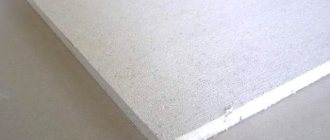Silicone sealants are very often used for finishing work. It happens that the mass has hardened and it is necessary to dissolve the silicone acryplast to a liquid consistency. When working, safety precautions are not always observed, and the substance gets on your hands, clothes, and stains adjacent surfaces. In such cases, you need to know how to properly clean without damaging the surface.
Properties of silicone-based compounds
The beneficial properties of sealant have long been noted by builders and home craftsmen. This material does not deform at high and low temperatures. It does not melt at temperatures up to +200 degrees, which means it is perfect for the bathroom, kitchen or sauna. The silicone composition can withstand frost down to -50, does not crack or crumble.
A high quality sealant can greatly facilitate repairs.
An important property of a silicone-based product is the presence of fungicides. This is an analogue of an antiseptic that prevents the proliferation of germs and pathogens. This means that no fungus or mold is dangerous if the seams are treated with high-quality silicone sealant. If this is important to you, when choosing a product, pay attention to whether it contains antifungal components.
It is simply impossible to imagine any finishing or construction work without silicone sealant.
The polyurethane composition fills any seams and cracks, dents and scratches. It can be stripped and sanded flush to the surface without anyone noticing the difference. This is the ideal tool for eliminating most external defects. After drying, the sealant remains elastic and resilient and does not crumble under pressure or pressure.
Silicone sealant joints are very durable.
Silicone-based compounds adhere to any base, from wood to metal. The product does not drip if applied to vertical walls or surfaces located at an angle. A large number of advantages make it indispensable for any repair.
For gluing auto glass
Sealants for gluing car windows have replaced outdated rubber gaskets. Most often, sealants are made on a polyurethane basis, due to which, after hardening, the structure becomes completely airtight, does not allow water and air to pass through, and the seams remain elastic. Passengers and the driver remain safe; even in the event of an accident, the windshield does not fly out.
Sealants for gluing car windows can be made based on artificial resins, rubber or silicone
Before purchasing any product, it is important to make sure that the composition is suitable for applying and securely fixing glass. In addition, you need to purchase a special primer - this is a substance that enhances the adhesion of different types of materials and improves the protection of seams from ultraviolet rays
The electrical conductivity of sealed seams must be either completely absent or minimal so that the car owner does not suffer from exposure to static electricity.
How to dissolve silicone sealant
During renovation or finishing work, it sometimes happens that the surrounding environment becomes dirty. Traces of hardened silicone can be found on tiles, on the kitchen table and even on the skin. Unfortunately, hardened acrylic sealant, for example, cannot be cleaned off without leaving a trace by mechanical action or by scraping it off the surface with a knife. This will leave both stains and scratches. How to remove sealant?
After completing the repair, excess silicone must be carefully removed.
Silicone-based products can be dissolved using formulations containing alcohol or acids. When cleaning, be sure to follow the following precautions:
- Ventilate the room regularly to avoid inhaling vinegar or alcohol fumes;
- use personal protective equipment, a respirator and gloves;
- do not try to remove the sealant immediately, wait until it softens and turns into jelly;
- If the sealant falls during application and does not have time to harden, do not pick it up with bare hands; use a knife or construction tool to pry it up.
To choose what to dissolve silicone sealant with, you need to take into account the component composition of the material.
To remove frozen sealant, you will have to resort to special solvents.
Acetone, white spirit and salt
So, the second method for removing silicone sealant from a bathtub is to use salt, acetone or white alcohol.
The latter is often used, because its effectiveness is no lower than similar means that are usually used in this case. White spirit and acetone are also considered effective for removing sealant from surfaces. Sometimes you even need to pour the stains and leave the product for a while, and only then start rubbing the stain and silicone residues. Let’s figure out how to remove silicone sealant in the bathroom using chemical compounds right now.
We suggest you read: Replace down with padding polyester in a down jacket
Types of solvents
Sometimes silicone substance that is not completely dry can be removed with a regular all-purpose cleaner. If a lot of time has passed since the drop hit and the household product did not work, it’s time to use specialized solvents. They are the ones who know how to remove silicone.
Silicone can be removed from any surface.
Before you begin cleaning, pay attention to the surface material where the stain may have dried. If you use a solvent that is too aggressive, it, together with silicone, can damage the top decorative part of the furniture or remove paint from the metal.
The sealant must be applied carefully.
Therefore, compare what, where and for how long you will apply so as not to worsen the situation. You should remember about safety precautions and the flammability of any type of solvent.
Theoretical data
When starting to clean silicone, they also think about the surface from which it is to be removed. Solvents are aggressive materials that damage the surface beyond repair. Therefore, consider the following:
- The sealant is removed from a plastic surface (PVC or polyolefin) with an acid such as hydrochloric acid;
- Acids cannot be used if silicone is applied to plastic based on polyester, polyurethane, polycarbonate, or plexiglass. The finishing material will be damaged;
- Polyurethane sealants are better removed with alkali. In this case, the product does not have any effect on plastic;
- Solvents reduce the shine of tiles and change the tone of the painted surface;
- The selected product is tested in an inconspicuous place or on a sample.
The density of chemical bonds of the sealant is also taken into account. Therefore, it is impossible to remove silicone instantly. You should wait a little until the selected solvent penetrates deeply into the material.
Sealing seams in rooms with high moisture
Folk remedies solvents
It happens that you don’t have a professional cleaner at hand, and a drop of sealant falls into a visible place. You can try to remove the stain using traditional recipes.
Silicone can be removed with tools.
You need to be extremely careful, do not touch the sealant with your hands, and carefully remove any remaining silicone with a knife or spatula.
- Gasoline solvent “White spirit” perfectly softens the texture of the silicone product. This cleaner does not act immediately, but has a prolonged effect. After about half an hour or an hour, you can try to remove with a suitable tool the excess sealant that has already begun to dissolve.
- You can try to remove traces of sealant using installation cleaner. The product does not always work, but a thin layer of silicone softens it well. All you have to do is remove the soft, sticky layer using available means.
- Household solvent helps remove traces of sealant. Silicone layers need to be wetted many times because the cleaner dries quickly. Repeat the procedure until the leak becomes pliable enough to be removed. Some craftsmen manage to literally dissolve the sealant in the product and completely remove the unnecessary layer.
- Almost every home has acetone. It does not eliminate old traces of silicone composition, but it copes well with fresh drops of it. Sometimes this is quite enough to restore order and eliminate an annoying nuisance. Acetone can replace remover for decorative nail polish.
- Sometimes regular homemade table vinegar or ammonia helps soften the texture of the sealant. Apply a little of this homemade solvent to a cotton swab and apply it to the area you want to clean for half an hour. Then carefully clean off the silicone stain using a fine abrasive, such as a sponge or sandpaper.
- Gasoline or kerosene will also come to the aid of an experienced craftsman. Moisten the silicone stain with this solvent and wait until it softens completely.
- Sometimes you can get rid of a fresh, not yet hardened silicone drop using an ordinary plastic bag. Apply the cellophane to the stain, wait for it to catch, and sharply tear it away from the surface to be cleaned. The silicone component will remain stuck to the bag, and all you have to do is clean up the remaining mark.
- A soap solution helps to dilute and wash silicone from surfaces. Use hot water, which will further soften the stain.
Hands and clothes
When the sealant gets on your hands, you can’t hesitate. Regular polyethylene will do. It is applied to the stained area and immediately removed. The silicone will stick to the polyethylene. Residues on your hands can be washed with running water and soap.
When the sealant has already dried slightly, you can use one of the following methods:
- Regular table vinegar. It is combined 1:1 with water and wiped with cotton pads soaked in the solution until completely clean;
- Table salt. Add salt to warm water and stir. Place your hands in the solution for 15 minutes. The sealant will become soft and can be rubbed with a pumice stone or with your hands;
- Solvents. Every home has acetone, gasoline or kerosene. They do the job well.
After cleaning, wash your hands with soap and apply moisturizer. But to avoid such a problem as dirty hands, all work must be done with gloves. If you don’t have them on hand, you can soap your hands and wait for them to dry. The soapy layer will not allow the sealant to adhere firmly to the skin.
Specialized solvents
When folk remedies don’t work, specialized solvents come to the rescue. Their action is based on the destruction of polymer compounds of silicone composition. Using a professional cleaner, you can remove stains of any age and at any stage of hardening. This product turns the sealant into a jelly-like mass without damaging the surface on which it is frozen.
There are many special products that will remove silicone.
- Penta-840 silicone remover literally destroys polymer compounds at the molecular level. The remarkable thing about this product is that softened silicone can be removed with a napkin rather than with a knife blade. Does not leave marks on the surface, but requires preliminary testing on a small area. The “Penta-840” wipe is quite aggressive, so how the solvent behaves in your case needs to be checked experimentally.
- The universal liquid for preparing and cleaning surfaces Dowsil OS-2 is actively used not only in everyday life, but also for treating aerospace and medical equipment. The product is known for its respect for the environment, the absence of components harmful to the ozone layer and the ability to remove silicone base from any surface at different stages of hardening. Dowsil OS-2 removes both new and old sealant stains with equal success.
- The Mellerud brand is presented in a wide range for consumers. Therefore, it is necessary to carefully read the names, composition and purposes of the products on the labels. The work of the product for removing the silicone layer is based on strong acids. Therefore, the cleaner is recommended for wooden, glass and ceramic surfaces. Experienced craftsmen recommend cutting off the top layer of hardened sealant before applying the cleaner for quick and maximum effect.
- Car enthusiasts love to use Body ANTISIL 770 liquid cleaner. The active formula works on organic components. Therefore, the remover is indispensable for chrome, aluminum and other delicate, easily deformed surfaces. Automotive cleaner helps remove sealant from car parts.
Useful tips
Solvents soften the sealant, but do not remove it completely.
More often, builders remove small silicone drops using white spirit. But: if the sealant is applied to a painted surface, it is removed along with the paint.
Repairers call Penta-840 a silicone remover. This is the best option. The advantage is the choice of produced variations that are used for specific surfaces.
Under the influence of low temperatures Penta-840 does not lose its characteristics. In the case of complete polymerization of silicone, the product will destroy it, but after prolonged exposure. Therefore, it is better to use Penta-840.
Remove sealant from rubber gaskets using a solvent used by car painters, Antisil.
Solvents
Silicone-Entferner will help you clean silicone from ceramics, metal, enamel and PVC surfaces. At the same time, the surface will not lose its shine, will not fade or become matte.
Professionals often use "Silicone Remover". It is expensive, but even capricious surfaces tolerate this solvent calmly.
But it’s better to make a neat silicone seam right away. A short video will help you figure this out:
Removing sealant from different surfaces
When removing stains from products containing polymer compounds, consider the type and material of the surface being cleaned. Many removers have contraindications for use and cannot be used, for example, on wooden surfaces.
A utility knife will also help remove the sealant.
To understand how to remove excess silicone sealant, you need to start from the material of the working surface.
Plastic
Plastic has a smooth surface, devoid of pores and rough texture. This has the added benefit of stripping it of silicone compounds. Here you can carefully work with a spatula or knife, soak the stain with vinegar or alcohol, apply a cotton pad and gasoline or kerosene.
Fresh sealant can be removed quickly.
Of the professional removers, those containing hydrochloric acids have proven themselves to be effective. They do not corrode plastic and eliminate any contamination.
Vinegar and alcohol are your assistants in removing sealant.
Glass
Due to its dense structure, glass does not allow sealant to penetrate into deep layers. Such a surface cannot be scraped with a knife or other sharp objects, so as not to scratch and create cracks.
Use professional sealant removers.
Professional solvents, kerosene, acetone and other folk remedies work most effectively. After removing the sealant from the glass, wipe it dry with microfiber or a special sponge to remove streaks.
Tile
The tiles look beautiful due to the glazed decorative surface. If it gets stained with silicones, do not scratch, scrub or rub. Cleaners containing organic components are also contraindicated.
Silicone sealant is most often used in the bathroom.
A ceramic surface can become dull and lose its brightness due to an incorrectly selected wash. Carefully read the composition and instructions before use, look for recommendations for cleaning ceramic slabs.
Silicone is not difficult to remove from tiles.
Tabletop
If the sealant on a wooden countertop has not yet hardened, you can remove it with hot water and an ordinary rag. You can try to pry off the frozen drop with a plastic spatula.
Use vinegar to remove silicone from the table.
Refrain from scraping the sealant off the table with a knife or other metal object.
Human skin
If you were not wearing gloves and the silicone-polymer mixture stuck to your skin, do not forcefully remove the adhered layer. This can lead to injury to the skin and possible further infection.
Sealant can also be quickly removed from the skin.
You can remove a frozen drop with any alcohol-containing composition. Apply a cotton pad soaked in alcohol and wait until the foreign layer completely softens.
Textile
70-80% acetic acid or an alcohol-containing liquid will help remove the hardened layer from the fabric. First test the method on a small area of fabric to make sure the item will not be damaged.
How to dilute frozen silicone
Sometimes the sealant hardens and needs to be returned to its liquid state. Craftsmen know how to dilute silicone sealant to a liquid state. Thinners come to the rescue, which need to be used in very measured doses.
Use a quality sealant for repair work.
The selected composition must be diluted carefully and in doses, observing all safety precautions. Make sure there is good ventilation in the room where you are. Some compounds can emit toxic fumes that have a detrimental effect on human health.
Only the applied liquid sealant retains its plasticity and is easy to remove.
Be sure to wear gloves and, if possible, clear safety glasses or a mask. The impact of thinning mixtures returns the sealant to its liquid state.
Safety precautions and common mistakes
Sealants and solvents are chemical compounds that can damage the skin on your hands. When working with such substances, you must follow the safety rules:
- Use gloves to protect the skin of your hands. Depending on the degree of aggressiveness of the substances, it is recommended to use rubber or construction gloves. If you don’t have gloves, then before working with the sealant you need to wash your hands with soap so that a protective film appears on the skin, protecting your hands from the adhesive.
- Ensure good ventilation in the room. To reduce exposure to toxic fumes from silicone-dissolving chemicals, you need to open windows and doors and create conditions for rapid air exchange.
- Put on plastic glasses. If acids are used as emollients, safety glasses will help prevent harmful fumes from damaging your eyes.
- Protect your respiratory system with a respirator or mask.
- Protect your hair with a special cap. It is almost impossible to wash the sealant off your hair, so a cap is necessary when working on the ceiling.
When getting rid of traces of sealant on any surface, people sometimes make mistakes that lead to irreversible damage to the materials. Most often, problems arise due to the incorrect selection of solvent or method for removing silicone. Before purchasing a chemical, you need to study the properties of the surface that will be treated and select the appropriate type of softening agent.
What not to do
Although the sealant is convenient, durable and easy to use, it has its contraindications and nuances:
- Pay attention to the expiration date of the product. Expired silicone takes too long to harden or does not harden at all.
- If you need to fill deep cracks, do not try to do it in one go. Work in layers, allowing long drying periods between pours. By observing this condition, you will achieve amazing results.
- There are sealants that are only suitable for interior work that is not visible to the eye. For example, to seal a bathtub from the inside. Such a product may turn yellow over time, since it does not have a decorative function.
- Use extreme caution when working on cast iron and metal surfaces. Some silicone compounds cannot be used with these materials as they will cause corrosion.
- Many people use sealant to insulate their houses, sealing cracks and irregularities. Do not use this method for new buildings; give the walls a couple of years for final shrinkage. Otherwise, the sealant will “corrode” along the walls and will not perform its functions.
- If you are looking for a sealant with fungicidal and antibacterial properties, remember that such a silicone layer must be renewed every few years. The antifungal effect disappears over time.
A spatula is a tool for removing sealant.
Many zealous owners breathed a sigh of relief with the appearance in the world of a sealant that solves many problems at once. But such a coin has two sides. Plan even minor cosmetic repairs carefully. Read the instructions carefully and follow the rules of personal safety.
Peculiarities
There has always been a need for grouting seams, filling holes and sanding joints, but previously all kinds of putties were used for these works, which were not very convenient to work with, and the result was not always of satisfactory quality. It is for these reasons that the search for a universal remedy has continued until now and led to the appearance of silicone sealant. With this product, moisture does not get under the protected surface and prevents it from collapsing.
The scope of application of sealant is very wide. With its help, you can seal a window frame, cover up cracks between the bathtub and the tiles, and even use it to eliminate possible water leaks from plastic pipes. All this is possible thanks to the specific composition of the product. To make silicone adhesive-sealant, you need to use silicone rubber, which is the basic element, amplifiers that will give the finished material strength after application. In addition, a vulcanizer is needed to make the composition liquid and viscous, an adhesion primer for better contact with the working surface, a plasticizer to impart additional elastic properties, and a filler that allows you to obtain the desired volume and color of the sealant.
Sealants vary depending on the vulcanizers they contain.
Acid adhesives. A distinctive feature is the unconventional smell that acetic acid imparts. It is better not to use this sealant on marble, aluminum and cement-containing surfaces.
When working with it, it is important to use protective equipment and masks, because the fumes are very toxic and cause dizziness and allergies.
Neutral sealant. There are several options for such a solution: alcohol, amine and amide
In this case, there is no pungent odor. Can be used on various types of surfaces.
Sealants are:
- single-component - find their application in the domestic sphere;
- two-component – characterized by the presence of complex components in the composition; they are most often used in production.
The characteristics of silicone sealant make it possible to use it on a wide variety of surfaces that may have a heterogeneous structure.
Their properties include:
- resistance to frost and moisture, easily withstands temperature changes;
- have increased adhesiveness, connect well with various parts;
- easily tolerate ultraviolet rays;
- high level of plasticity;
- high heat resistance, use is possible in conditions from +300 degrees to -50.
This product can be used both indoors and for outdoor work.
If you need to do something in the house, then the sealant can be used for:
- sealing joints on walls, ceilings, floors, especially when working with drywall;
- sealing joints on countertops and window frames where natural or artificial stone is used;
- sealing parts with high thermal load;
- in the bathtub, you can use it for installing a mirror, sealing sewer pipes, eliminating joints during the installation of a bathtub or shower stall.
Use silicone sealant for outdoor use:
- sealing drainage pipes;
- sealing seams on window frames and joints;
- carrying out repair work on stone tiles that are moving away from their base;
- sealing seams during roofing;
- during the vinyl cladding process.
The technology for producing sealant is quite complex and it is not so easy to ensure that it has the appearance of rubber, while being able to be liquid and easily penetrate into various cracks, eliminating them, but it allows you to make repairs of much higher quality, and the result is much more representative.











